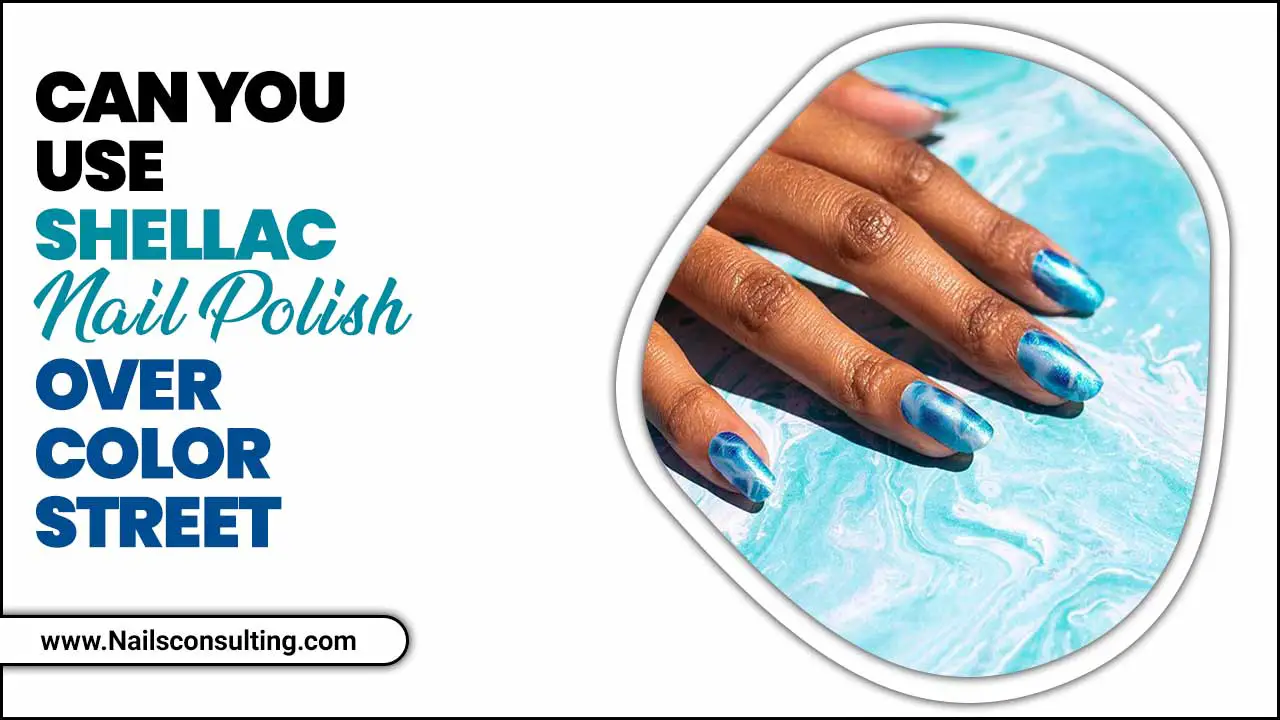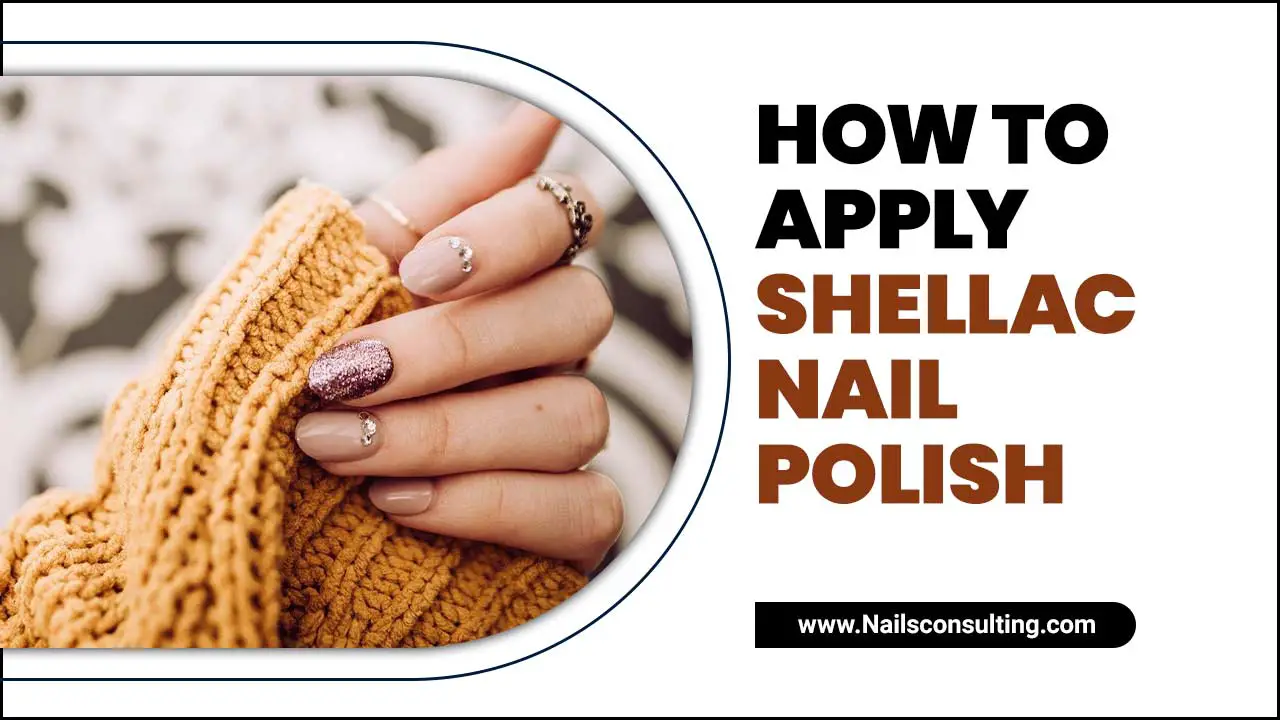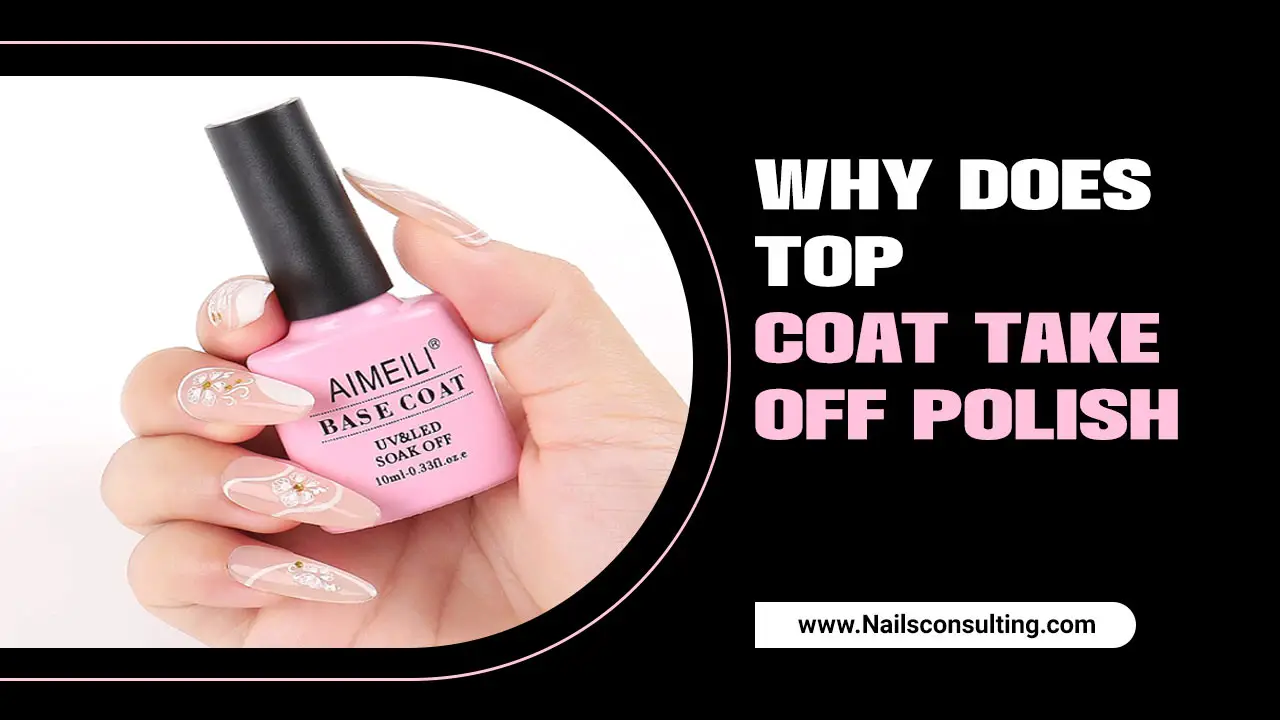Shellac has been a popular choice for adding a glossy finish to furniture, flooring, and even nails for centuries.
This natural resin, derived from the lac beetle, has been handy by craftsmen and artists alike due to its durability and beautiful sheen. However, with the rise of DIY projects and at-home manicures, there has been a growing concern about the longevity of shellac. Many wonder, does shellac peel off easily?
This question has sparked debates among professionals and novices alike, with various opinions and experiences being shared. We will discuss Factors that can cause Shellac to peel off. Whether you are a seasoned shellac user or considering it for the first time, this article aims to provide a comprehensive answer to the question, does-shellac peel off?
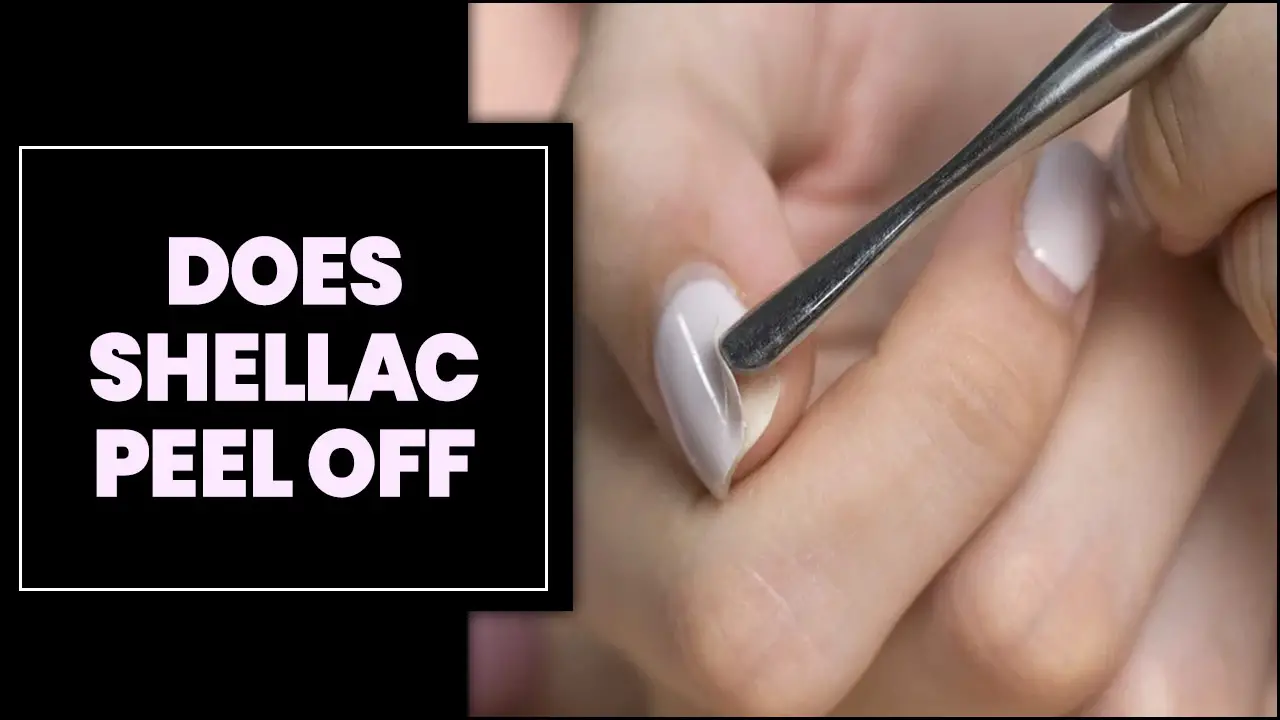
How Does Shellac Adhere To The Nails?
Shellac is a widely popular and highly durable nail polish option that has gained immense popularity among nail technicians and beauty enthusiasts alike. One of the key factors contributing to the long-lasting nature of Shellac is its exceptional adhesion to the nails.
So, how does Shellac adhere so effectively? The secret lies in the unique formulation of Shellac. It is a hybrid nail polish that combines the best features of gel polish and traditional nail lacquer. This revolutionary formulation contains a blend of high-quality resins that create a strong bond between the nail plate and the polish.
- Shellac is a type of nail polish that adheres to the nails through a unique formula and application process.
- The adhesion process starts with preparing the nails by removing any oils or residues to ensure a clean surface.
- I apply a base coat to the nails, creating a bond between the natural nails and the Shellac polish.
- Next, we apply the Shellac colour coat in thin layers, allowing each layer to cure under a UV or LED lamp.
- The curing process activates the ingredients in the polish, causing it to harden and adhere to the nails.
- Finally, the technician applies a top coat to provide extra savings and shine and also to seal the Shellac polish in place.
- The combination of the base coat, colour coat, and top coat, along with the curing process, creates a strong bond between the Shellac polish and the nails.
- This adhesive quality of Shellac ensures a long-lasting and chip-free manicure that can last up to two weeks or
Does Shellac Peel Off: Exploring The Factors
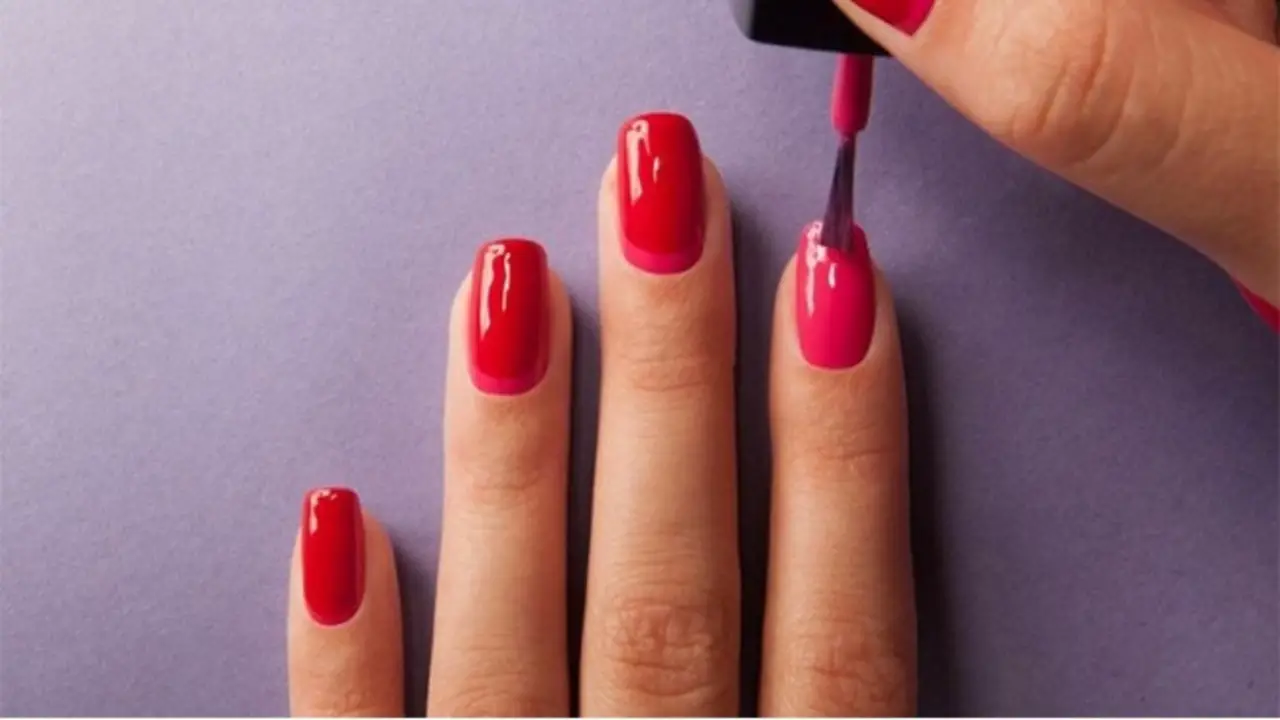
One common question that people often have for nail polish is, “does shellac peel off?” Shellac is a type of nail polish that has gained popularity for its long-lasting and chip-resistant properties. However, despite its durability, it is not immune to peeling. Shellac is famous for its ability to adhere to the nail bed, providing a solid and glossy finish that can last for weeks.
A UV lamp often cures it, helping to harden the polish and ensure its longevity. However, there are instances where shellac can peel off prematurely. Factors such as improper application, excessive exposure to water, and rough treatment of the nails can contribute to shellac peeling off.
Factors That Can Cause Shellac To Peel Off

Several factors can cause Shellac, a popular finish for wood surfaces, to peel off. Understanding these factors is crucial in order to prevent and address potential issues that may arise. One of the primary reasons for peeling is inadequate surface preparation.
It is essential to thoroughly clean and sand the surface before applying Shellac to ensure proper adhesion. Any dirt, grease, or previous finishes left on the surface can create a barrier and lead to peeling.
- Improper surface preparation: Failure to properly clean and prepare the surface before applying Shellac can lead to poor adhesion and eventual peeling.
- Moisture exposure: Excessive moisture exposure, such as high humidity or direct contact with water, can cause the Shellac to soften and eventually peel off.
- Inadequate drying time: Insufficient drying time between coats or before subjecting the Shellac to regular use can result in premature peeling.
- Incompatible products: Using incompatible products, such as oil-based stains or finishes, on top of Shellac can lead to adhesion issues and peeling.
- Poor application technique: Applying Shellac too thickly or unevenly can cause stress on the coating, leading to peeling.
- Abrasion and wear: Heavy use, frequent rubbing, or abrasive cleaning methods can cause the Shellac to wear down and peel off over time.
- Exposure to sunlight: Prolonged exposure to direct sunlight can cause the Shellac to degrade and
1.Incorrect Application Technique
Regarding to applying Shellac, it is crucial to ensure that the correct application technique is handy. Failure to follow the proper method can result in an undesirable outcome, such as the Shellac peeling off prematurely. This issue often arises when individuals neglect to properly prepare their nails before applying the Shellac.
An essential step in the application process is to thoroughly cleanse the nails and remove any residual oils or debris. This can be achieved by gently buffing the nail surface and using a nail dehydrator or primer.
Additionally, it is imperative to apply the Shellac in thin, even layers, allowing each layer to fully cure under a UV or LED lamp before proceeding to the next. Rushing through this process or applying thick layers can cause the Shellac to lift or peel off, resulting in a less-than-satisfactory outcome.
2.Improper Nail Preparation
Proper nail preparation is crucial for a long-lasting and flawless manicure. Unfortunately, many individuals neglect this essential step, resulting in disappointing outcomes such as chipping, peeling, or premature wear. One particular type of manicure that is often subject to these issues is Shellac, a popular brand of gel polish.
While Shellac is famous for its durability and extended wear time, it is not immune to problems caused by improper nail preparation. When applying Shellac, it is imperative to ensure that the nails are thoroughly cleaned, trimmed, and shaped before the gel polish is applied.
Any residue, oil, or moisture on the nails can prevent the Shellac from adhering properly, leading to peeling or lifting. Additionally, rough and uneven nail surfaces can compromise the bond between the natural nail and the gel polish, creating an environment ripe for premature peeling.
3.Exposure To Water And Chemicals
Regarding the issue of whether shellac peels off when exposed to water and chemicals, it is important to consider the nature of this versatile and widely-used coating. Shellac, derived from the secretion of the lac beetle, is famous for its excellent protective properties and durability.
However, it is not impervious to all external factors. In terms of exposure to water, shellac does have some limitations. While it is resistant to minor splashes and spills, prolonged or direct contact with water can cause it to soften and potentially peel off.
This is particularly true if the shellac coating has not been properly applied or if a sufficient number of coats have not been handy to create a strong barrier. Therefore, it is crucial to exercise caution when using shellac in areas where water exposure is expected, such as bathrooms or kitchens.
Proper Care And Maintenance To Prevent Peeling
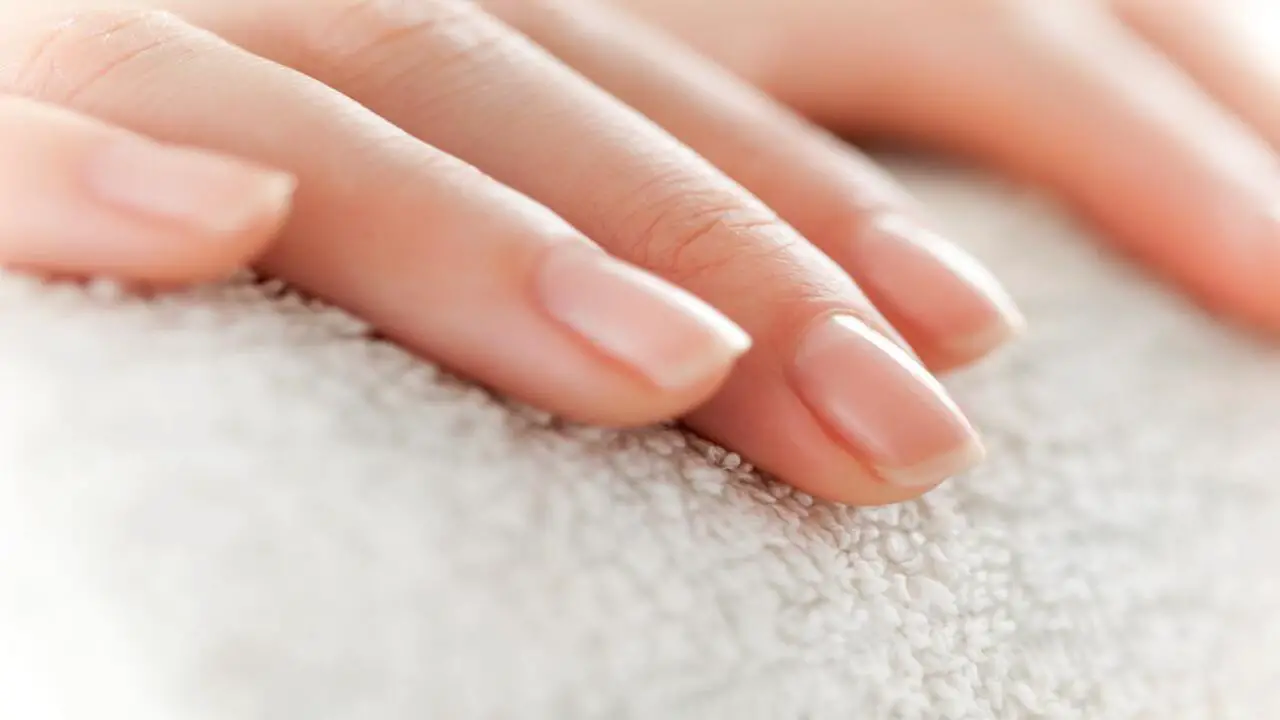
Proper care and maintenance are essential factors to consider for preventing peeling. Whether it be in the context of paint on walls, coatings on furniture, or even the skin. Understanding the significance of these practices is crucial in maintaining the longevity and aesthetics of various surfaces.
One key reason why it is important to know proper care and maintenance is to preserve the integrity of the surface. Peeling can often be a result of negligence or lack of attention to routine maintenance.
- Avoid excessive exposure to sunlight, as it can cause the paint to fade and peel over time.
- Clean the surface regularly using mild detergent and water to remove dirt and debris that can contribute to peeling.
- Ensure proper ventilation in areas prone to high humidity, as moisture can weaken the paint and lead to peeling.
- Repair any cracks or damaged areas promptly, as they can serve as entry points for moisture and accelerate peeling.
- Apply a primer before painting to create a strong bond between the surface and the paint, reducing the risk of peeling.
- Use high-quality paint and follow the manufacturer’s instructions for application and drying times to ensure proper adhesion.
- Avoid using harsh chemicals or abrasive cleaners that can strip away the paint and contribute to peeling.
- Regularly inspect the painted surfaces for any signs of peeling or damage and address them promptly to prevent further issues.
- Consider using a topcoat or sealant to provide an extra layer of protection against peeling.
How To Remove Shellac Properly
Knowing how to remove Shellac properly is of utmost importance for several reasons. Shellac is a popular and widely used wood finish that provides a durable and glossy protective layer to various surfaces.
However, over time, it may become necessary to remove this finish for various reasons, such as repairing damage, refinishing the surface, or simply changing the appearance. Improper removal of Shellac can lead to irreversible damage to the underlying surface, resulting in additional time, effort, and money being spent on repairs or replacements.
- Gather the necessary supplies, including acetone, cotton balls or pads, aluminium foil, a nail file, and a cuticle pusher.
- Start by filling the top layer of the Shellac gently to remove the shine and break the seal.
- Soak a cotton ball or pad with acetone and place it on your nail.
- Wrap the nail with aluminium foil to secure the cotton ball in place. Repeat this process for all nails.
- Let the acetone-soaked cotton balls sit on your nails for about 1015 minutes to allow the Shellac to dissolve.
- After the recommended time, remove the aluminium foil wraps and gently push off the softened Shellac using a cuticle pusher.
- If there are any remaining traces of Shellac, you can lightly file them away with a nail file.
- Finish by washing your hands thoroughly to remove any traces of acetone, and apply cuticle oil or a moisturizing hand cream to nourish your nails and cuticles.
Tips To Prolong The Wear Of Shellac
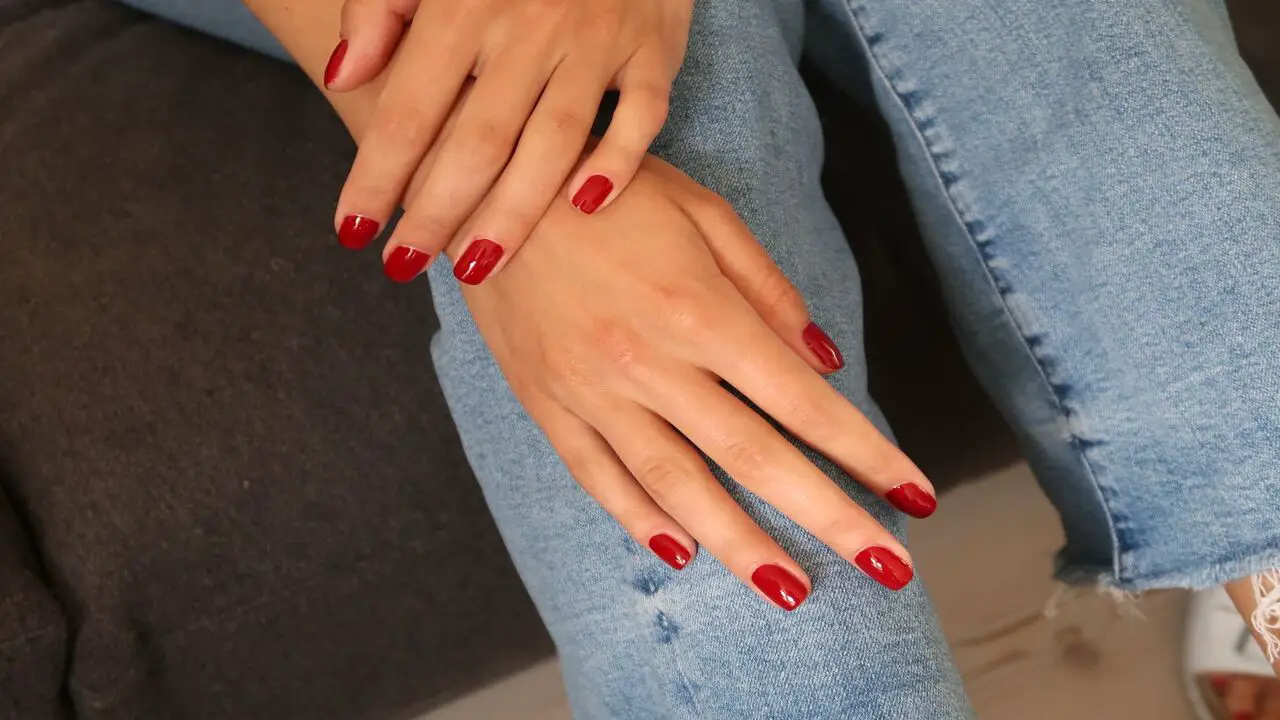
Knowing why it is important to know how to prolong the wear of Shellac is essential for anyone who wants to maintain a long-lasting and flawless manicure. Shellac is a popular type of nail polish that provides a durable and chip-resistant finish.
However, without proper care and attention, the longevity of Shellac can be compromised. One of the main reasons why it is important to know how to prolong the wear of Shellac is to save time and money.
- Avoid exposing your Shellac nails to excessive water or moisture, as it can cause lifting and peeling. Wear gloves when doing household chores or washing dishes.
- Apply a clear top coat every couple of days to help maintain shine and protect the Shellac from chipping.
- Be mindful of how you use your nails. Avoid using them as tools to open packages or scratch surfaces, as this can lead to damage.
- Apply cuticle oil regularly to keep your nails and the surrounding skin hydrated, which helps prevent dryness and breakage.
- Avoid excessive exposure to harsh chemicals or solvents, as they can weaken the Shellac and cause it to lift or break.
- Try to avoid prolonged sun exposure or tanning beds, as UV rays can cause fading or discolouration of the Shellac.
- Schedule regular maintenance appointments with a professional nail technician to ensure proper removal and reapplication of Shellac as needed.
Conclusion
Shellac is a common type of manicure that has gained popularity for its long-lasting and durable finish. It is a combination of resin and pigment that is cured with UV light, creating a hard and glossy coating on the nails. While shellac is a popular and durable option for manicures, it is not free from potential issues, including peeling.
However, with proper application and aftercare, this can be minimized, and your shellac manicure can last for weeks. Ultimately, the decision to use shellac or not should be based on personal preference and the individual’s nail health. It is always recommended to consult a professional for the best nail care and treatment options. If you read the above outline properly, we hope now you understand does shellac peel off.
FAQs:
1.Does Shellac-Peel Off Easily?
Ans: Yes, Shellac does peel off easily with the proper technique. It is important to use a gentle removal process to prevent damage to the natural nail, with the ever-growing popularity of Shellac in the beauty industry. It’s no surprise that many individuals have questions about its application and removal process.
2.Is Shellac Removal A Time-Consuming Process?
Ans: Not at all! Shellac removal is relatively quick compared to other nail treatments. It usually takes around 10-15 minutes to remove Shellac properly.
3.Can Shellac Be Safely Peeled Off At Home?
Ans: While it is possible to peel off Shellac at home, it is not recommended. Peeling off Shellac improperly may cause damage to the natural nail bed. It is best to visit a professional nail technician for safe removal.
4.Does Shellac Leave Any Residue After Peeling Off?
Ans: No, Shellac does not leave any residue on the nail after peeling off. However, it is essential to ensure proper removal to avoid any leftover product or damage.
5.Are There Any Specific Steps Or Precautions That Can Be Taken To Prevent Shellac From Peeling Off?
Ans: To prevent shellac from peeling off, it is important to properly prepare the surface before applying the shellac. This involves cleaning and sanding the surface to remove any dirt, grease, or old finishes. Additionally, ensuring that the surface is completely dry before applying the shellac is crucial.

